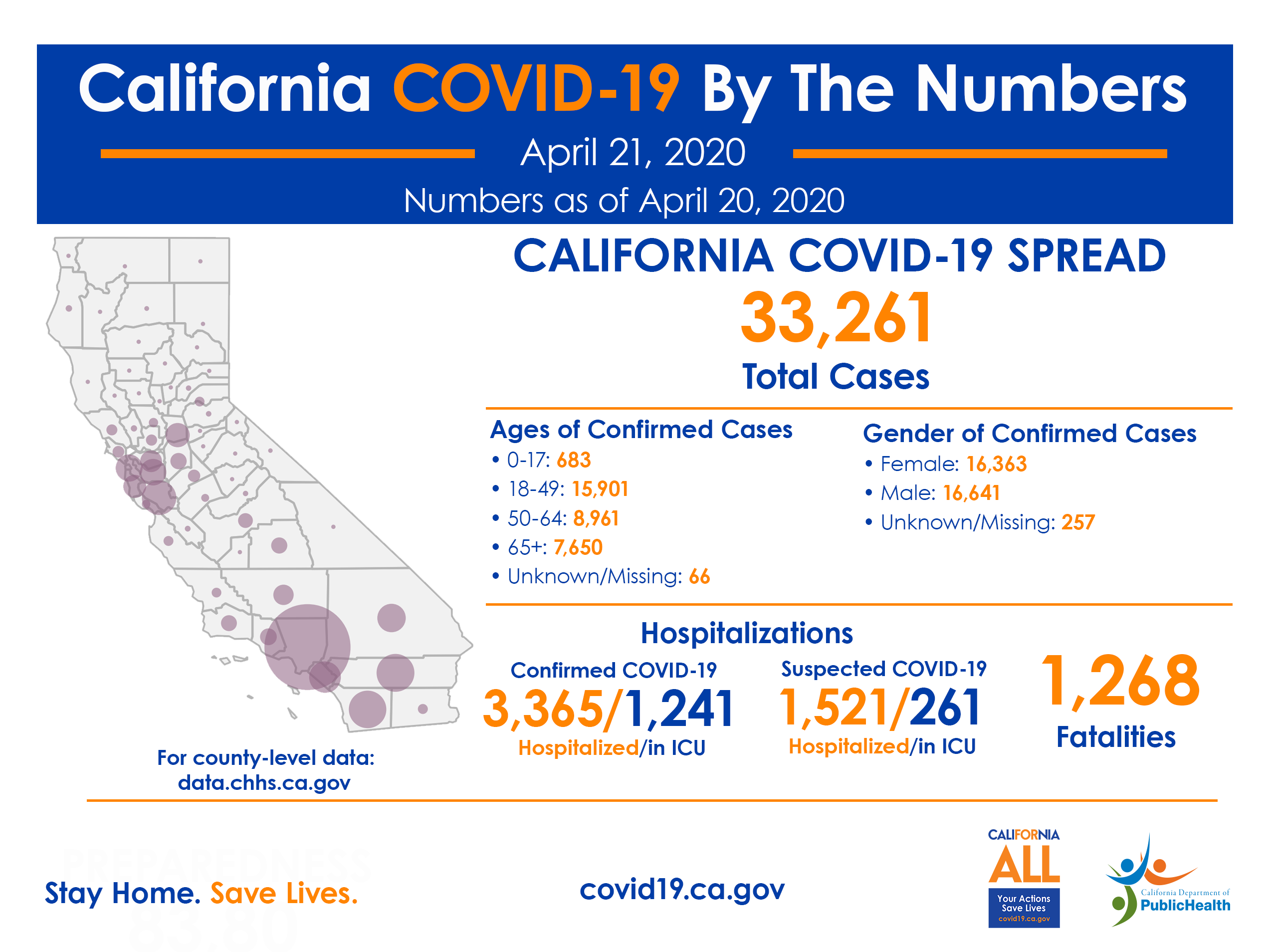Sacramento, CA…The California Department of Public Health today announced the most recent statistics on COVID-19. California now has 33,261 confirmed cases and 1,268 deaths. Racial Demographics – A More Complete Picture The California Department of Public Health is committed to health equity and collecting more detailed racial and ethnic data that will provide additional understanding for determining future action. Health outcomes are affected by forces including structural racism, poverty and the disproportionate prevalence of underlying conditions such as asthma and heart disease among Latinos and Black Californians. Only by looking at the full picture can we understand how to ensure the best outcomes for all Californians.
The differences in health outcomes are most stark in our COVID-19 death rates. We have nearly complete data on deaths, and we are seeing these trends: Whites and Asians are underrepresented in the number of COVID-19 deaths for adults 18-64 years of age and older compared to their population numbers, while Latinos are dying at disproportionately high rates in that same age group. Black Californians are overrepresented relative to their population representation in deaths for all adults 18 and older. White Californians 65 and older have a higher proportion of deaths than their population numbers.
For additional information, please go to the California Cases and Deaths associated with COVID‐19 by Race and Ethnicity (PDF) web page.
Health Care Worker Infection Rates
As of April 20, local health departments have reported 3,704 confirmed positive cases in health care workers. This includes on-the-job exposures, and other exposures, such as travel and close family contact. As testing capacity continues to increase, and more tests are being conducted directly in physician’s offices and processed through commercial laboratories, local public health officials will not be able to report the source of exposure for every affected health care worker.
Testing in California
As of April 20, more than 300,100 tests had been conducted in California. At least 292,906 results have been received and another 7,200 are pending. These numbers include data California has received from commercial, private and academic labs, including Quest, LabCorp, Kaiser, University of California and Stanford, and the 22 state and county health labs currently testing.
How People Can Protect Themselves
Every person has a role to play. Protecting yourself and your family comes down to common sense:
- Staying home except for essential needs/activities.
- Practicing social distancing.
- Washing hands with soap and water for a minimum of 20 seconds.
- Avoiding touching eyes, nose or mouth with unwashed hands.
- Covering a cough or sneeze with your sleeve, or disposable tissue. Wash your hands afterward.
- Avoiding close contact with people who are sick.
- Staying away from work, school or other people if you become sick with respiratory symptoms like fever and cough.
- Following guidance from public health officials.
What to Do if You Think You’re Sick
Call ahead: If you are experiencing symptoms of COVID-19 (fever, cough or shortness of breath) and may have had contact with a person with COVID-19, or recently traveled to countries with apparent community spread, call your health care provider before seeking medical care so that appropriate precautions can be taken.
For more information about what Californians can do to prevent the spread of COVID-19, visit Coronavirus (COVID-19) in California.
California continues to issue guidance on preparing and protecting California from COVID-19. Consolidated guidance is available on the California Department of Public Health’s Guidance web page.



